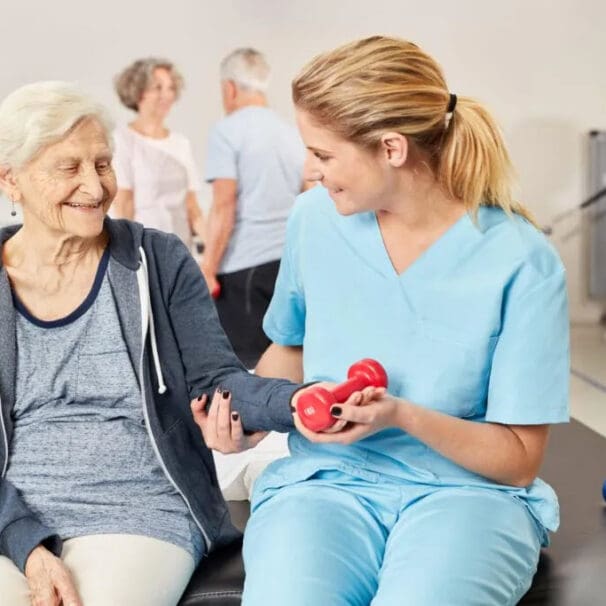HealthProviders DB is a comprehensive database of healthcare providers, including a complete directory of all Gerontology Occupational Therapists.
Occupational Therapist Healthcare Taxonomy Code 225XG0600X
As of today, the following are the total number of Gerontology Occupational Therapists nationally, in your State, and near your location.
Select a State below to view the list by State. Additionally, you can narrow the list by city, among other options, from the Filter Panel, which you can open by clicking the vertical ellipses ⋮ in the upper right corner of the app.
Alaska – Alabama – Armed Forces Pacific – Arkansas – American Samoa – Arizona – California – Colorado – Connecticut – District of Columbia – Delaware – Florida – Federated States of Micronesia – Georgia – Guam – Hawaii – Iowa – Idaho – Illinois – Indiana – Kansas – Kentucky – Louisiana – Massachusetts – Maryland – Maine – Marshall Islands – Michigan – Minnesota – Missouri – Northern Mariana Islands – Mississippi – Montana – North Carolina – North Dakota – Nebraska – New Hampshire – New Jersey – New Mexico – Nevada – New York – Ohio – Oklahoma – Oregon – Pennsylvania – Puerto Rico – Palau – Rhode Island – South Carolina – South Dakota – Tennessee – Texas – Utah – Virginia – Virgin Islands – Vermont – Washington – Wisconsin – West Virginia – Wyoming
Medicare
The following are the total number of Gerontology Occupational Therapists who accept Medicare in your State, the number who have opted out of Medicare, and the total number excluded from participation in Medicare nationwide.
The diagram below shows all the Gerontology Occupational Therapists across the country, represented by blue bubbles. The larger the bubble, the greater the concentration of providers in that area. Red bubbles represent Medicare-excluded providers, with the larger bubbles indicating a higher percentage of excluded providers in that region. You can change the bubble size to be based on exclusions from the Size menu.
What do Gerontology Occupational Therapists do?
Gerontology occupational therapists help older adults maintain independence and quality of life by addressing physical, cognitive, and emotional challenges.
They assess and modify home environments for safety, provide rehabilitation for bodily injuries, support cognitive functions such as memory, and teach adaptive techniques for daily activities to improve performance and reduce pain.
They also educate caregivers and promote social engagement to combat loneliness and depression.
How they help
Improve daily living: They help with activities of daily living (ADLs) such as dressing and bathing, as well as instrumental ADLs like cooking and managing medications. They teach techniques to make tasks easier, especially for those with arthritis or joint pain.
Enhance safety and accessibility: They assess homes for fall risks and recommend modifications like installing handrails, improving lighting, or suggesting adaptive equipment like grabbers or non-slip mats.
Support cognitive and emotional health: They use exercises and strategies to support memory, attention, and problem-solving skills for those with mild cognitive impairment or dementia. They also help with emotional well-being, social engagement, and provide support for caregivers.
Rehabilitate after injury or illness: They assist individuals in recovering from strokes, fractures, or other health events by focusing on upper extremity rehabilitation, restoring strength, and improving coordination.
Provide adaptive equipment: They may recommend and help clients use assistive devices to make tasks like opening jars, reaching high shelves, or using the bathroom easier and safer.
Educate clients and caregivers: They teach both the older adult and their family or caregivers new skills and techniques, including safe transfer techniques, modified routines, and effective equipment use.

